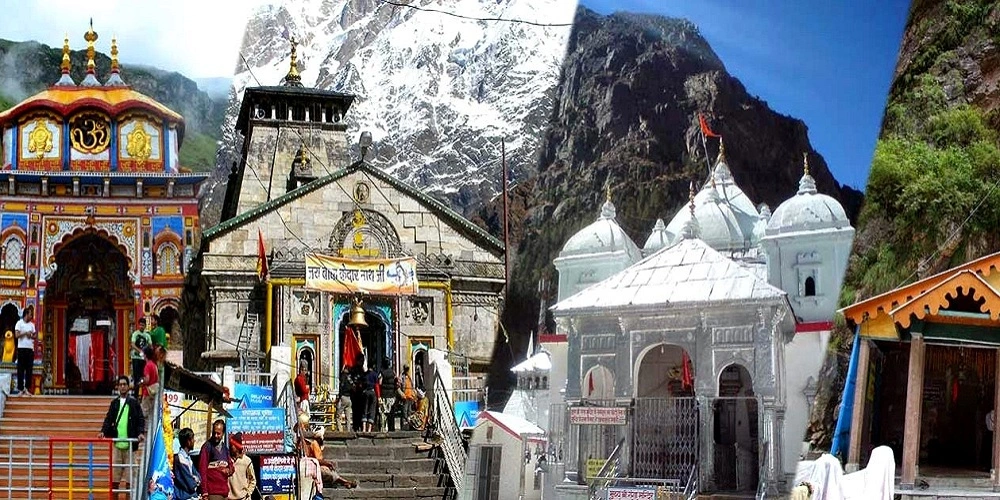Embarking on the Chardham Yatra, a revered pilgrimage in the Himalayas, is a spiritual journey that holds deep significance for Hindus. The Chardham Yatra refers to the pilgrimage to the four sacred shrines in Uttarakhand—Yamunotri, Gangotri, Kedarnath, and Badrinath. For first-timers, the journey can be both awe-inspiring and overwhelming. This guide will help you prepare for the spiritual and physical challenges that come with this sacred journey.
1. Understanding the Chardham Circuit
- Yamunotri: The source of the Yamuna River, Yamunotri is dedicated to Goddess Yamuna. Pilgrims visit the temple to seek blessings and take a holy dip in the Yamuna’s waters.
- Gangotri: This shrine is dedicated to Goddess Ganga, the sacred river of the Hindus. It is believed that the river originated from the locks of Lord Shiva here.
- Kedarnath: One of the twelve Jyotirlingas of Lord Shiva, Kedarnath is the most remote of the four shrines and is located near the Chorabari Glacier, the source of the Mandakini River.
- Badrinath: Dedicated to Lord Vishnu, Badrinath is the most important shrine among the Chardham. It is located along the banks of the Alaknanda River.
The Chardham Yatra usually starts from Yamunotri, moves to Gangotri, then Kedarnath, and concludes at Badrinath. This sequence represents the order in which the river deities emerged.
2. Best Time to Visit
The Chardham Yatra season starts in late April or early May and usually concludes by October or early November, before the winter sets in. The ideal time to visit is between May and June or September and October. During these periods, the weather is relatively pleasant, and the routes are safer.
3. How to Reach
- By Air: The nearest airport is Jolly Grant Airport in Dehradun. From there, you can hire a taxi or take a bus to reach the starting point of the Yatra.
- By Train: The nearest railway stations are Rishikesh, Haridwar, and Dehradun. After reaching these stations, you can continue your journey by road.
- By Road: Well-connected road networks make it possible to reach the Chardham destinations by bus or car. State-run buses and private taxis are readily available from Haridwar, Rishikesh, and Dehradun.
4. Preparing for the Yatra
- Physical Fitness: The Chardham Yatra is physically demanding, especially the treks to Kedarnath and Yamunotri. It’s advisable to start a fitness regime that includes walking, jogging, and some breathing exercises to prepare your body for the high-altitude trek.
- Medical Check-up: Get a medical check-up before starting the Yatra to ensure you are fit for the journey. Those with respiratory, cardiac, or joint issues should take extra precautions and consult their doctors.
- Clothing and Gear: The weather in the Himalayas is unpredictable. Pack warm clothing, including thermals, jackets, and woolen accessories. Comfortable trekking shoes, a raincoat, sunglasses, sunscreen, and a first-aid kit are essential.
- Travel Insurance: Given the challenging terrain and unpredictable weather, having travel insurance that covers medical emergencies and accidents is highly recommended.
5. Accommodation
Accommodation ranges from basic guesthouses to mid-range hotels and dharamshalas (religious rest houses). It’s advisable to book your stay in advance, especially during peak season, as the number of pilgrims can be overwhelming. For those looking for a more authentic experience, staying in ashrams or dharamshalas is a good option.
6. Dietary Considerations
The food available along the Chardham route is simple and vegetarian, in line with the spiritual nature of the journey. Most places serve North Indian cuisine, but you might also find local dishes. Carry dry fruits, energy bars, and other snacks for the road, as the journey between shrines can be long.
7. Pilgrimage Etiquette
- Respect Local Customs: The Chardham Yatra is a deeply spiritual journey for many. Dress modestly, maintain cleanliness, and respect the local customs and traditions.
- Photography: While the natural beauty is breathtaking, be mindful of where photography is allowed, especially inside temples where it may be prohibited.
- Waste Disposal: The Himalayan ecosystem is fragile. Avoid littering, and carry your waste to dispose of it responsibly.
8. Important Tips
- Stay Hydrated: Carry a water bottle and stay hydrated, but avoid drinking untreated water from streams.
- Acclimatize: Give your body time to adjust to the high altitude to prevent altitude sickness.
- Stay Connected: Mobile connectivity is limited in some areas, so inform your family and friends of your itinerary in advance.
- Cash and ATMs: ATMs are scarce in the higher regions, so carry sufficient cash for your expenses.
Conclusion
The Chardham Yatra is not just a physical journey but a spiritual one that brings peace and a deeper connection with nature and divinity. Proper planning, preparation, and respect for the local culture will ensure that your pilgrimage is safe, fulfilling, and memorable. Whether you’re seeking spiritual enlightenment or simply want to experience the grandeur of the Himalayas, the Chardham Yatra is a once-in-a-lifetime journey that will leave you with lasting memories.
Safe travels and may your journey be blessed!
